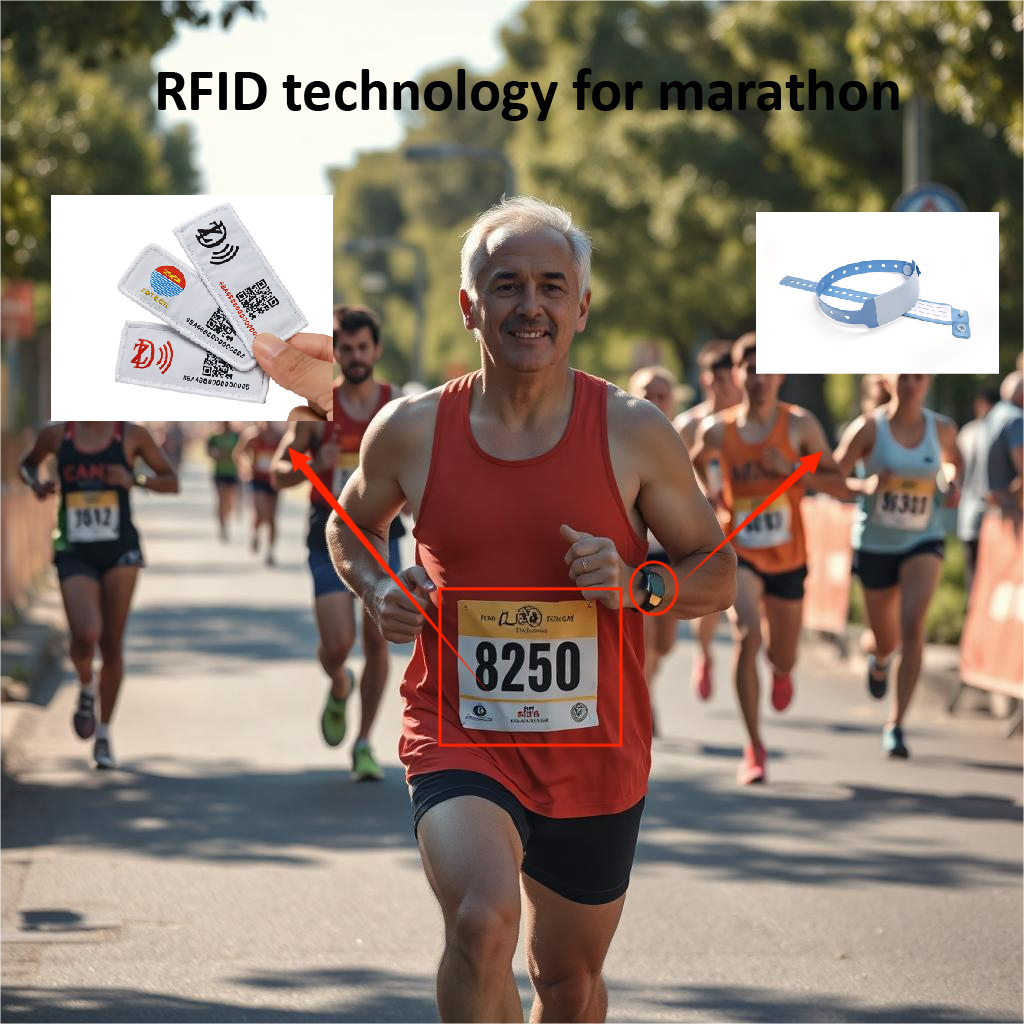In modern marathon events, accurate and efficient timing is essential—not just for ranking athletes but also for delivering a smooth race experience. This is where the RFID timing system comes in. By using radio-frequency identification technology, organizers can record precise race times, manage large numbers of participants, and provide real-time race results to spectators and media. Let’s break down what this technology is, how it works, and why it’s becoming a standard in sports event management worldwide.
Before we dive into its applications, it’s important to understand the basics. RFID stands for Radio Frequency Identification. It works by transmitting data between an RFID tag and a reader via radio waves. Each runner wears a tag that contains a unique ID, which is automatically read when they pass through timing points on the course.
Unlike manual timing or barcodes, RFID tags can be scanned in motion, without any stopping or contact. This makes it ideal for marathons, where thousands of runners need to be tracked simultaneously without slowing down.

The process is straightforward but highly efficient. It involves four main components:
RFID Tags – Small chips attached to a runner’s bib, shoe, or wristband.
Readers – Devices that detect the tags and record the passing time.
Antennas – These create the detection zone that activates the tags.
Timing Software – A central system that stores, processes, and publishes results.
When a runner passes an antenna, the tag sends its ID and time to the reader. This information is transmitted to the timing software, which updates the race results instantly. For spectators, this means live race tracking on event websites, apps, or big screens at the finish line.
Not all RFID tags are the same. In marathons, two main types are used:
Passive RFID tags – These have no battery and are powered by the reader’s signal. They are lightweight, low-cost, and perfect for large-scale events.
Active RFID tags – These include a battery and can transmit data over longer distances. They are more expensive but ideal for ultra-marathons or extreme weather events where detection zones may be farther apart.
Choosing between passive and active tags depends on budget, course design, and accuracy requirements.
RFID is far more than just a finish line tool. Its versatility allows it to be used across the race journey:
Start and Finish Line Timing – The system records both the “gun time” and the actual “chip time” for each runner, ensuring fairness.
Split Timing – Antennas placed at checkpoints along the route capture segment times, giving detailed pace analysis.
Real-Time Updates – Race progress is instantly available to friends, family, and coaches online.
Anti-Cheating Measures – Multiple checkpoints ensure runners follow the correct route and prevent shortcut attempts.
These features make RFID essential for maintaining the integrity of competitive sports events.
One of the main reasons RFID timing systems are now standard in major races is their reliability and scalability. Here’s why:
High Accuracy – Timing errors can be reduced to milliseconds.
Efficiency – Thousands of runners can be processed without delays.
Live Data – Results can be viewed online as the race unfolds.
All-Weather Reliability – Performance is not affected by rain, heat, or lighting.
Better Runner Experience – Less queuing and more focus on the race itself.
For race organizers, these benefits translate into smoother operations and happier participants.
While RFID is powerful, proper setup is key to getting the most from it. Event managers should keep these factors in mind:
Tag Placement – Whether on the shoe, bib, or wrist, the placement impacts detection accuracy.
Antenna Positioning – The detection zone should fully cover the track width to avoid missed reads.
Data Backup – Always have redundancy in case of power or network issues.
System Integration – Ensure timing data connects seamlessly with registration and results platforms.
Pre-Race Testing – Simulate real race conditions to check system performance before race day.
Attention to these details ensures reliable timing and a professional event image.
The role of RFID in sports is evolving. Beyond basic timing, future uses may include:
Data Analytics – Generating pace charts, fatigue analysis, and performance predictions.
Personalized Feedback – Post-race summaries tailored to each runner’s performance.
Interactive Experiences – Integrating with AR or VR for immersive race replays.
AI-Powered Forecasting – Predicting finish times and identifying potential health risks during the race.
These innovations will make RFID race timing even more valuable for both participants and event sponsors.
From ensuring fair play to delivering real-time race results, RFID has transformed marathon sports timing. Its accuracy, speed, and scalability make it a must-have for modern sports event management. As the technology advances, we can expect even richer insights, more interactive experiences, and greater efficiency for organizers.
For race directors looking to upgrade their timing system, ZD Technology offers reliable and customizable RFID timing solutions designed for professional sports events. Whether you’re managing a city marathon or a small charity run, our systems deliver the precision and performance you need—every time.
Do you need a professional team to provide you with solutions? Contact us for a quote
Let us discuss it with you.